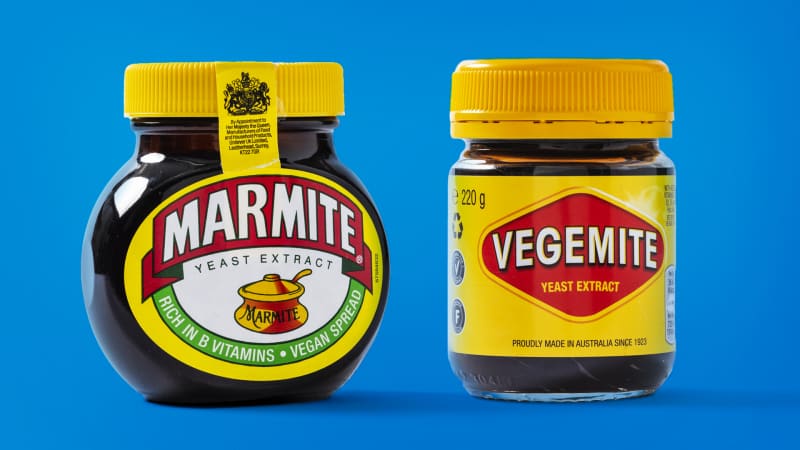Marmite and Vegemite are two brands of spreadable yeast extract that are popular in Britain and Australia, respectively.
Are You Team Marmite or Team Vegemite?
Published Jan. 20, 2023.

Commonly used as a savory spread on cheese sandwiches or buttered toast, they also find a home in soups and stews, stir-fries, pastas, and (if Vegemite’s website is to be believed) even brownies.
Both are sold in glass jars with yellow lids and red logos. And both have an intensely salty and umami-rich flavor that can take some getting used to.
So what’s the difference between the two, and how do you use them?
Sign up for the Cook's Insider newsletter
The latest recipes, tips, and tricks, plus behind-the-scenes stories from the Cook's Illustrated team.
Marmite Versus Vegemite
The first noticeable difference between these two savory spreads is their appearance: Vegemite is almost black with a thick texture like peanut butter, whereas Marmite is dark brown and has a sticky, syrupy consistency, like molasses.
As for their taste, we find Vegemite to be more intense than Marmite, which has a milder flavor and even a little sweetness compared to its slightly bitter and more yeast-forward Aussie cousin.
How Marmite and Vegemite Came to Be
These two potent spreads are based on a yeast extract, made from discarded brewers yeast, invented in the 19th century by Justus Von Liebig, a German scientist who also invented the OXO beef bouillon cube.
Marmite, the UK’s favorite, was first on the scene in 1902. It was originally packaged in a small earthenware pot, akin to a French casserole called a “Marmite,” which inspired its name.
The spread, a milder version of which was exported to Australia and New Zealand, was so packed with B vitamins that it became a common source of nutrition not only in schools and hospitals but also for soldiers and prisoners of war during both World Wars.
In fact, it was in 1919, when Marmite imports to Australia were disrupted by World War I, that the Fred Walker Company tasked Dr. Cyril P. Callister to develop an alternative. Originally called “Pure Vegetable Extract,” it hit the shelves as Vegemite in 1923.
Their recipes are distinguished by the unique grain blends utilized by the brewers that yield the yeasts used by each company. In addition, each brand uses a proprietary blend of vegetable and spice extracts and B vitamins to craft its final product.
One-Hour Comfort
Learn how to create crowd-pleasing recipes in no time with a variety of time-saving hacks that don't sacrifice flavor. No matter what you’re in the mood for, you can count on finding meals that satisfy sweet tooth or carb cravings alike.How to Use Marmite and Vegemite
We love these flavor enhancers and encourage you to use them in much the same way you use soy or Worcestershire sauce.
Start small, using just ¼ teaspoon at a time, and add them to taste to soups, stews, pan sauces (see the onion gravy in our Bangers and Mash), marinades, stir-fries, roasts, rices and porridges, pastas, breads, and even pizza.
The simplest way to enjoy them? Stir a bit into a mug of hot water to create a warming tea on a chilly day.
Want to learn more about these spreads? Check out this reel from Digital Assistant Editor Eden Faithfull.

